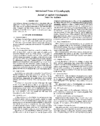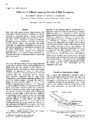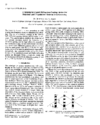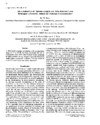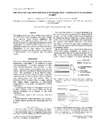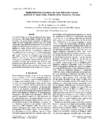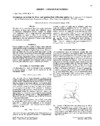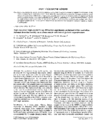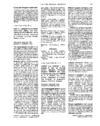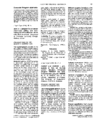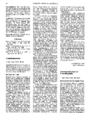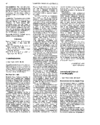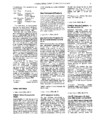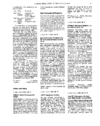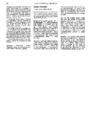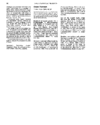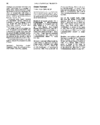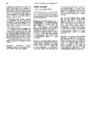issue contents
February 1995 issue

Cover illustration: The observed X-ray diffuse scattering in the (h0l) section of 1,3-dibromo-2,5-diethyl-4,6-dimethylbenzene. Courtesy of T. R. Welberry and B. D. Butler.
international union of crystallography
Free 

research papers
The possibilities of applying neutron time-of-flight Laue diffraction in monitoring structural changes in single crystals are considered. Simulations show that useful structural information can be obtained from single data frames (single shots), leading to a substantial improvement in the time resolution for following such changes.
Simple methods are presented of correcting the wide-range X-ray diffraction patterns of diffusely scattering materials for distortion due to finite speciment length, high transparency, strong Compton scattering and contributions from small-angle scattering.
The use of multilayer coatings in the classical Ioffe diffraction-grating neutron interferometer is proposed. This interferometer combines the properties of two periodic structures: dispersion by a diffraction grating and high reflectivity because of the multilayer coating.
A new differential thermal analyser has been developed suitable for combining with time-resolved X-ray equipment. The use of this instrument with simultaneous SAXS, SAXS/WAXS and energy-dispersive powder diffraction experiments is described.
Time-Resolved X-ray Diffraction Study of the Staging Phase Transition in CuCl2-Intercalated Graphite
A real-time X-ray diffraction study of staging phase transitions in CuCl2-intercalated graphite during deintercalation in ambient air has been carried out. A position-sensitive detector was used to perform the real-time quantitative phase analysis at different stages of the deintercalation reaction.
Direct slit-collimation correction of small-and wide-angle scattering data from semicrystalline materials on the basis of Akima polynomials and slit functions renders Soller-slit collimation unnecessary. A gain factor of four or five in scattered intensity results.
A polynomial-based spatial-distortion correction, derived from the diffraction pattern, has been used to enable good spot-position prediction for processing Laue diffraction data recorded on an image plate.
short communications
The form of the transmission factor for sample geometries encountered in X-ray and neutron fibre diffraction studies is considered.
computer programs
The paper describes an algorithm for an empirical post-solution absorption correction. Only Fobs and structural parameters (isotropic level) are required.
fast communications
An ion-implanted Si(111) sample with lateral periodic superstructure has been studied by high-resolution triple-crystal diffractometry at the Australian National Beamline Facility of the Photon Factory synchrotron. Detailed analysis of the data will yield a map, as a function of lateral position and depth, of the lattice distortions perpendicular to the sample surface.
Fine-scale dark streaks, only a few arc seconds in angular width, are discovered within the area of overlap at Kossel-line intersections. They delineate loci of coherent multiple diffraction and impose potentially useful markers on the broad-line divergent-beam pattern.
computer program abstracts
SORTX generates a stick model of the atoms or peaks in a SHELX file on a PC screen. Atoms are selected and renamed or deleted using the mouse.
Interactive computer programs (PARSET and PARSYM) are described that create input files for programs MORGUE and PARAM, which perform neutron powder structure refinement solution with rigid-body positional and thermal-motion constraints.
crystallographers
Free 

international union of crystallography
Free 

notes and news
Free 

new commercial products
Free 

books received
Free 

Free 

Free 

Free 



 journal menu
journal menu









